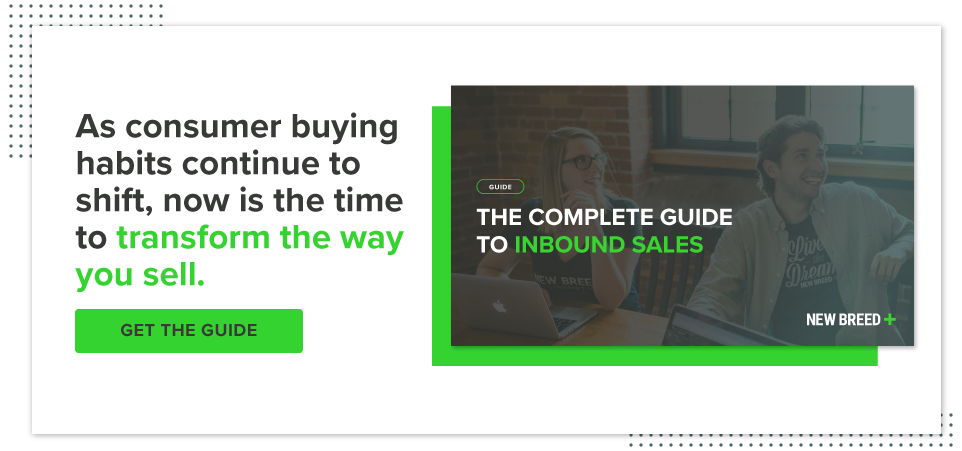The most commonly missed opportunity for sales reps is failing to get a strong enough understanding of a company’s greater goals and challenges.
When I enter a sales call, I think about there being two sets of objectives that I need to talk about with someone: what’s important for the prospect being tasked with finding a solution and why that solution is important for the company as a whole. If you don’t have a framework in place, it’s easy to forget to ask about both of those perspectives and not have the insight to inform later sales stages.
Traditionally, many sales reps used the BANT (budget, authority, needs, timeline) framework to guide their initial sales conversations. It helps you determine if a prospect is a good fit, if expectations are the same on both sides and if it’s possible to move the deal forward. However, BANT is surface level and only helps you qualify.
GPCT enables you to get a deeper understanding of what’s really important to a prospect. You use this framework to find out what they’re planning to do, how they’re planning to do it, what some of the roadblocks they face are, what issues they’re hoping to solve and when they need them solved by.
What is GPCT?
GPCT is a good framework for running your discovery calls, and to gain the most actionable insight, you can expand upon it by also incorporating budget, authority, negative consequences and positive implications.
Understanding a prospect’s plans, goals and challenges will help you architect a solution that fits their needs. But, that solution will need to be informed by the complexity of the problem and the time constraints in place. Following up on those aspects by discussing consequences and implications will help you open a prospects’ eyes to the costs and benefits of your solution and its components.
Goals
Goals are always a good place to start a conversation during outreach. Why did a prospect take your call? What are they trying to do?
It’s great to understand the goals around the specific project or initiative the prospect is working on, but it’s also important to gain an understanding of the greater company goals and how the current project fits into the company direction.
People are passionate about their goals, so if you can get a good understanding of them, it’s easy to keep the rest of your conversation flowing around them.
Plans
Going over a prospect’s plans comes naturally after discussing goals. Sometimes prospects will already have plans in mind that they’ll explain to you. Otherwise, they might be looking to you for input, in which case you have an opportunity to start introducing your solution.
Keep in mind that the plans discussed during the initial call will evolve throughout the whole sales conversation as you gain a greater understanding of the other elements of GPCT.
Challenges
While challenges might be discussed alongside goals at the start of the conversation, in my experience calls normally follow the framework in order.
Challenges can be both what goals are trying to solve and what’s preventing plans from being enacted.
Timeline
A prospect’s timeline will help you understand what deadlines they’re working toward, which you can use to understand when sales decisions need to be made.
You might also need to adjust the solution you recommend based on how pressing a timeline is or push back against a tight timeline if a complex solution is needed.
Consequences and Implications
You have the most opportunity to demonstrate your expertise during the consequences and implications phase of the discussion.
When you’re talking about positive consequences, it’s always great to reinforce the goals and plans that have already been discussed and then highlight how you’ve helped similar companies achieve that goal in the past. When you talk about negative implications, you have an opportunity to introduce ideas they haven’t thought about so far.
The conversation you have around consequences and implications shows your ability to understand a prospect’s goals, plans, challenges and timeline and proves that you’re able to offer perspective and architect a solution that matches that.
The Takeaway
BANT is the tip of the iceberg when it comes to initiating a sale. GPCT enables you to dig deeper and understand what’s truly important for a prospect. Then, discussing consequences and implications goes an extra layer.
When you’re on a call with a prospect, it’s important to listen and pivot as it makes sense. You don’t need to talk about these things in order, but you do need to discuss them all.
Having the framework in the back of your mind helps you ensure you’re using the time you have on a call effectively, demonstrates that you’ve considered all aspects of the conversation and helps you gain buy-in for future conversations.





